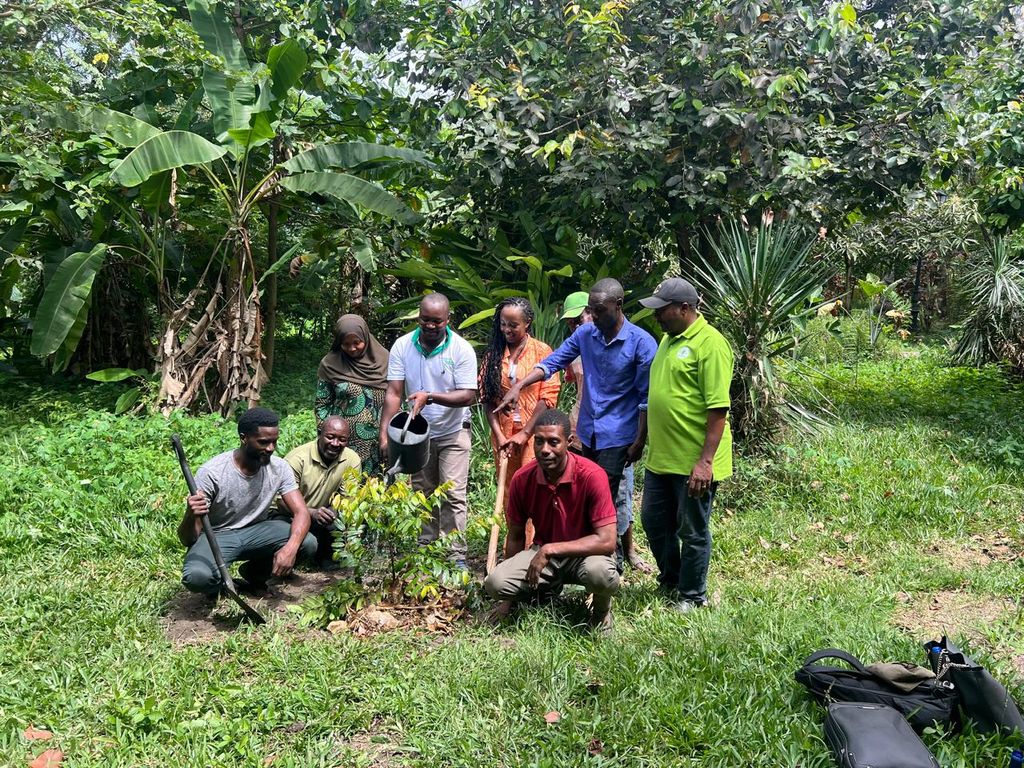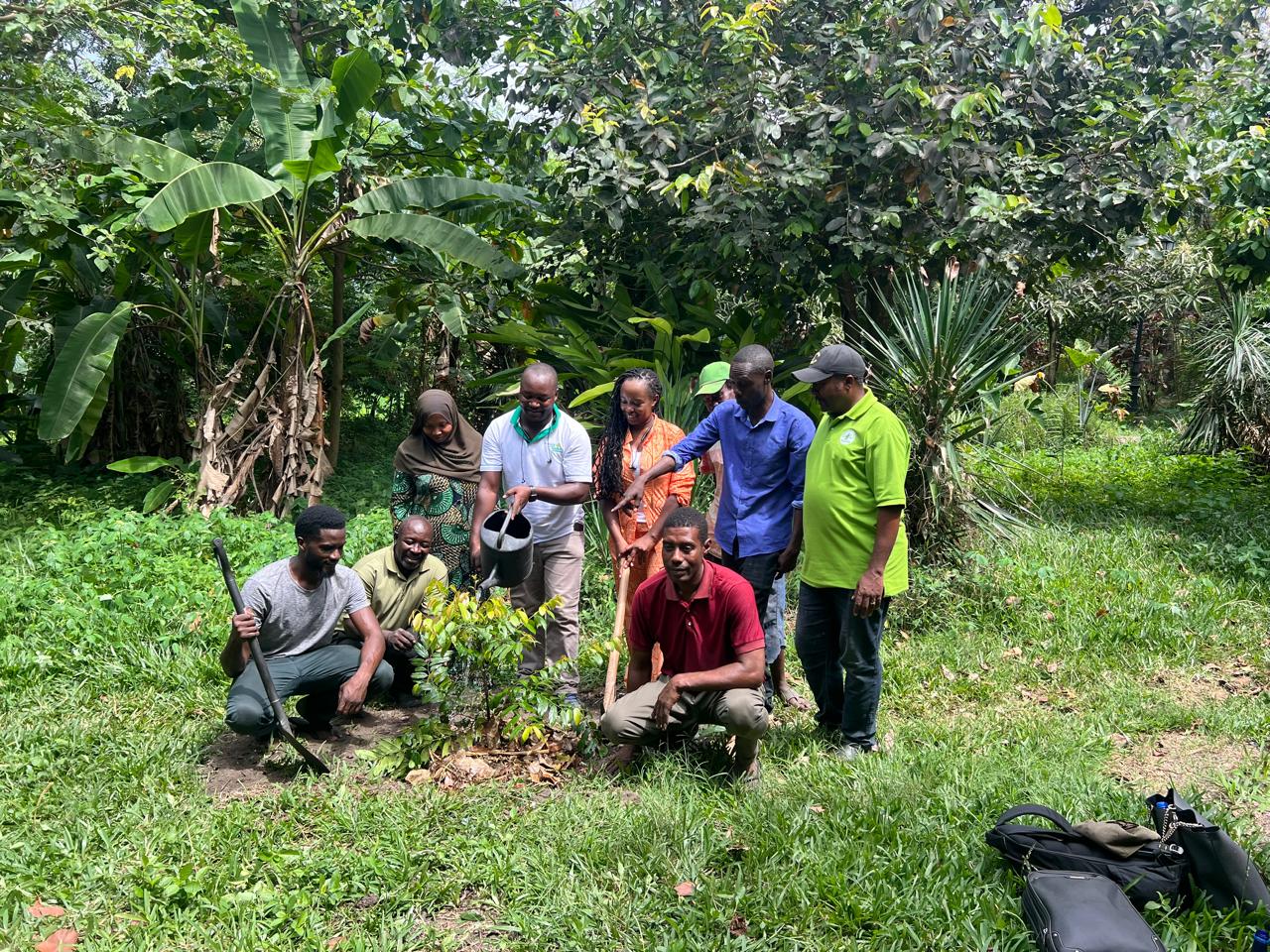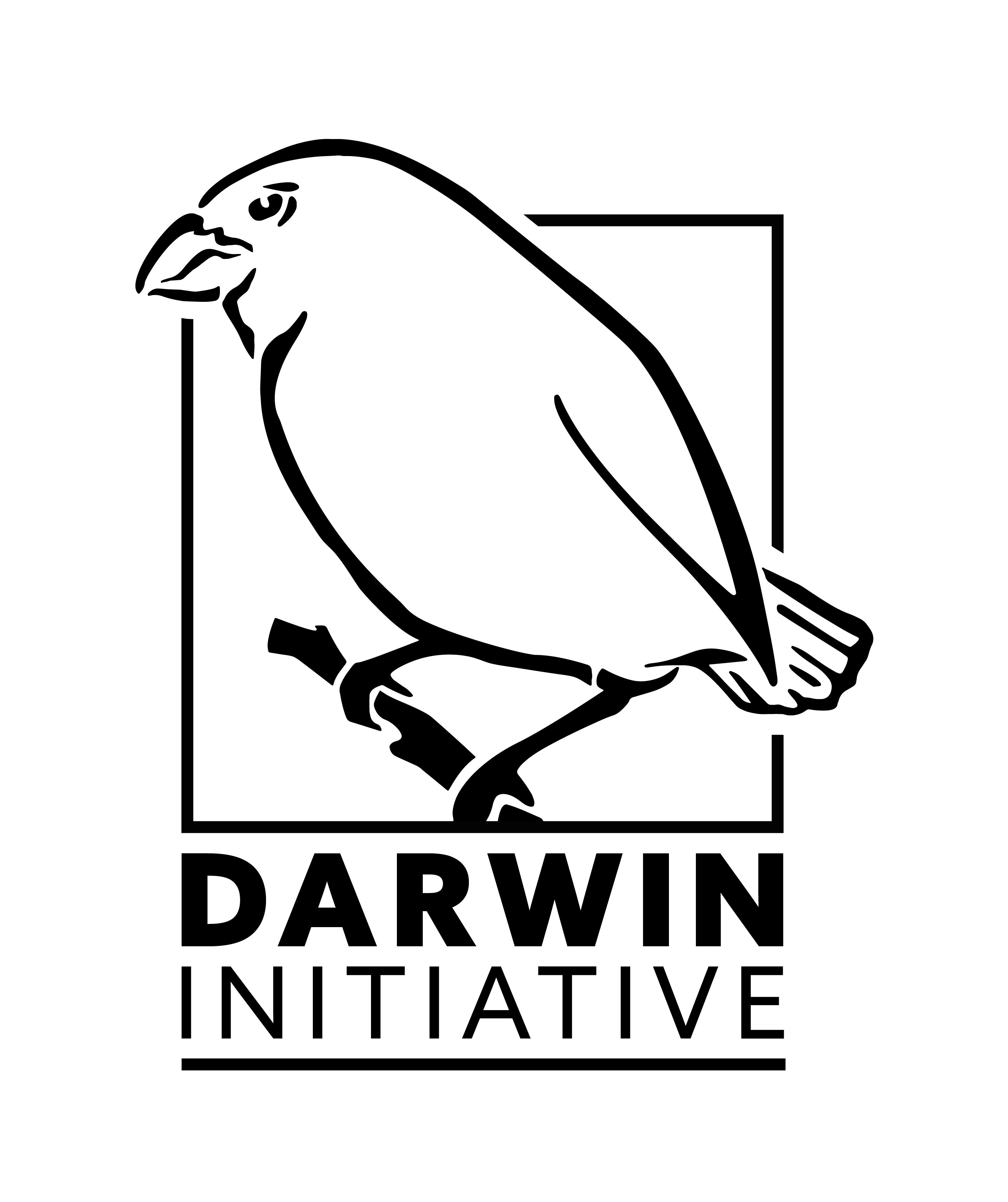Tanzania’s Native Tree Species

-
Status of project
Ongoing -
Region
Africa -
Programme
Ecological Restoration Alliance of Botanic Gardens -
Workstream
Saving Plants -
Topic
Ecological Restoration
Diversifying Tanzania’s Native Tree Species Portfolio for People and Biodiversity
Funded by the UK Government’s Foreign & Commonwealth Development Office – Darwin Initiative.
Project start date: April 2024
Project end date: March 2026
The Bonn Challenge is a global goal to bring 350 million hectares of degraded and deforested landscapes into restoration by 2030. Tanzania is one of 61 countries that have made restoration pledges to restore 5.2 million hectares of degraded land. Despite this pledge, in 2018, progress has been slow – particularly with regard to the use of native tree species (NTS), with which Tanzania is richly endowed: 1,755 NTS; 410 threatened; 308 endemic; 247 timber species of which 30 are threatened.
Integration of NTS into planting has been slow due to different constrains:
- Lack of a focused national NTS policy
- Inadequate incentives for planting NTS
- No NTS seed zone maps or information on which species to plant where
- Poor knowledge about the usefulness of NTS
- Poor knowledge/ practice in NTS seed/seedling storage, handling, propagation, planting and management
- Unstandardised seed testing and allied laboratory management for NTS
- Poor knowledge on micropropagation methods for almost 95% of NTS.
These constraints result in NTS seed and seedlings being either unavailable or expensive to buy and propagate. Furthermore, the wide scale planting of inappropriate exotic and/or native species can (a) deplete/damage ecosystem services; (b) displace biodiversity, and; (c) fail altogether due to poor site selection and management, negatively impacting livelihoods.
The project, funded by Darwin Initiative Innovation, will (i) prioritise over-exploited (i.e. useful) threatened NTS; (ii) assess capacity and constraints affecting NTS seed/seedlings availability for restoration, and; (iii) address policy and practical barriers to NTS availability for restoration.

Project Outcome
Tanzanian Native Tree Species (NTS) seed portfolio diversity increased prioritising NTS of high value to people and biodiversity.
Project outputs
- Assessment of current NTS portfolio and of conservation opportunities/priorities carried out, and constraints identified.
- Data and tools for NTS collection, processing, storage and propagation developed and shared with seed/seedling suppliers.
- National Tree Seed Centre, NGOs/CBOs and private sector seed/seedling suppliers trained in NTS collection, processing, storage, propagation and planting.
- A National NTS Policy developed for Tanzania and creation of complementary tools for implementation.
The project is implemented by BGCI in collaboration with Tanzania Forest Service Agency (TFS), Tanzania Tree Growers Associations Union (TTGAU), ECHO East Africa and Migombani Botanical Garden of Zanzibar.
Many other stakeholders are involved and organized into a Seed/seedling Suppliers Consultation Group (SSCG), which will ensure that the policy and resources developed, and training provided, responds to the actual needs in Tanzania.
Seed/Seedling Suppliers Consultation Group (SSCG)
To enable impactful implementation of the project, we have established a Seed/seedling Suppliers Consultation Group (SSCG) which will ensure that the project is responding to the actual needs of Tanzania through policy and resources development and capacity building. The SSCG will provide guidance and support and act as a sounding board for the project partners on all matters pertaining to NTS seed/seedling supply. The group members will be required to contribute their knowledge, expertise, and experience on items under discussion in meetings, to enable proper and impactful implementation of the project.
The responsibilities of the SSCG include:
- Identification of national NTS policy gaps and practical constrains
- Consultations during national policy development (to provide mechanisms for direct livelihood benefits of communities)
- Identification of existing NTS restoration and conservation resources/tools in Tanzania
- Contribute to determining the existing capacity and resources gaps in NTS restoration and conservation in Tanzania: availability of seeds/seedlings of NTS, existing tools and resources on NTS and gaps to be filled, knowledge gaps to be filled with the planned training.
- Contribute to the development of a list of at least 100 useful and ecologically important NTS to be targeted by the project
- Promote the “What to plant where” tools
The membership of the SSCG include national and local actors in Tanzania who are working on NTS conservation and understand the capacity gaps and needs. The group is made up of representatives from National Tree Seed Centres, Government, NGOs, CBOs, and the private seed sector.
List of members
- Tanzania Forest Service – represented by Fandey Mashimba and Jameseth Lazaro
- Tanzania Tree Growers Association Union (TTGAU) – represented by Kastory Timbula and Yohana Ezekiel
- ECHO East Africa Impact Centre represented – by Erwin Kinsey and Charei Munene
- Migombani Botanic Garden (Zanzibar) – represented by Juma Haji, John Ndege and Mwajuma Abadi
- The Kilimanjaro Project – represented by Sarah Scott and Noel Mtenga
- National Herbarium of Tanzania, Arusha – represented by Neduvoto Piniel Mollel
- Compassionate Carbon – represented by Elliot Kinsey
- Zanzibar Department of Forestry – represented by Abbas Mzee and Said Juma
- Missouri Botanic Garden – represented by Roy Gereau and Tariq Stevart
- Pams Foundation – represented by Andrea Bianchi
- Tanzania Alliance for Biodiversity (TABIO) – represented by Davie Manongi
- Reforest Africa – represented by Robin Loveridge and Herman Lyatuu
- Independent Consultant (Attached to York University) – represented by Robert Wild
NTS web-hub
The Native Tree Species (NTS) web-based hub aims to facilitate access to information held in relevant databases and to be an open sharing tool for ‘What to plant where’ resources to support NTS sourcing and seed collection, propagation, growing and planting, including opensource seed zone maps and potential vegetation maps.
We are currently building the NTS web-hub…more coming soon!

